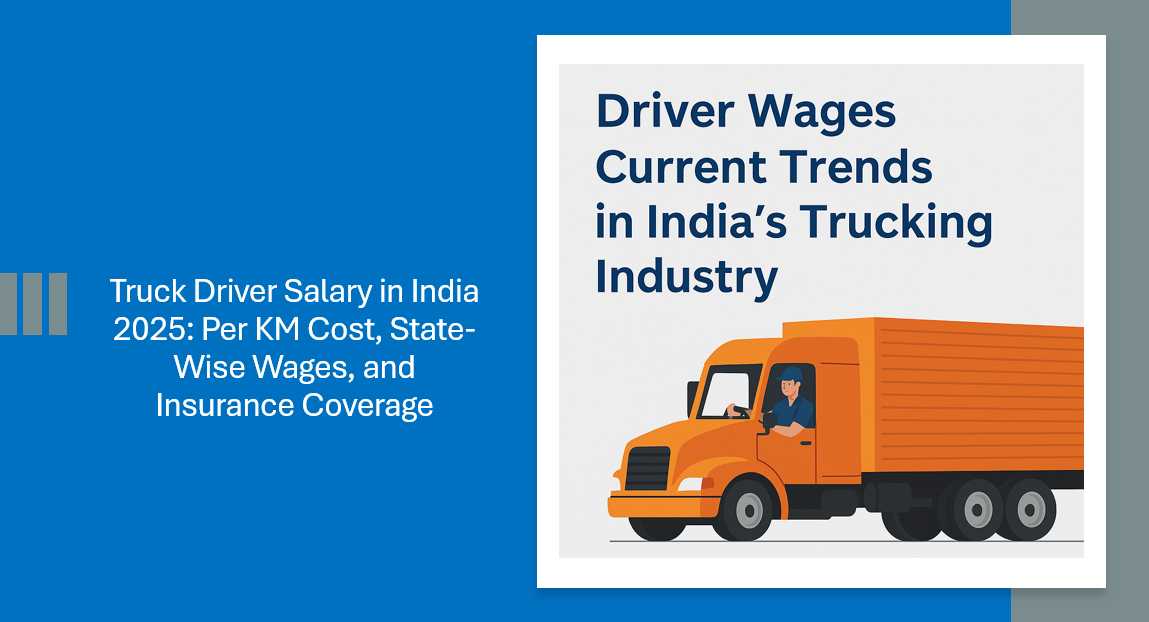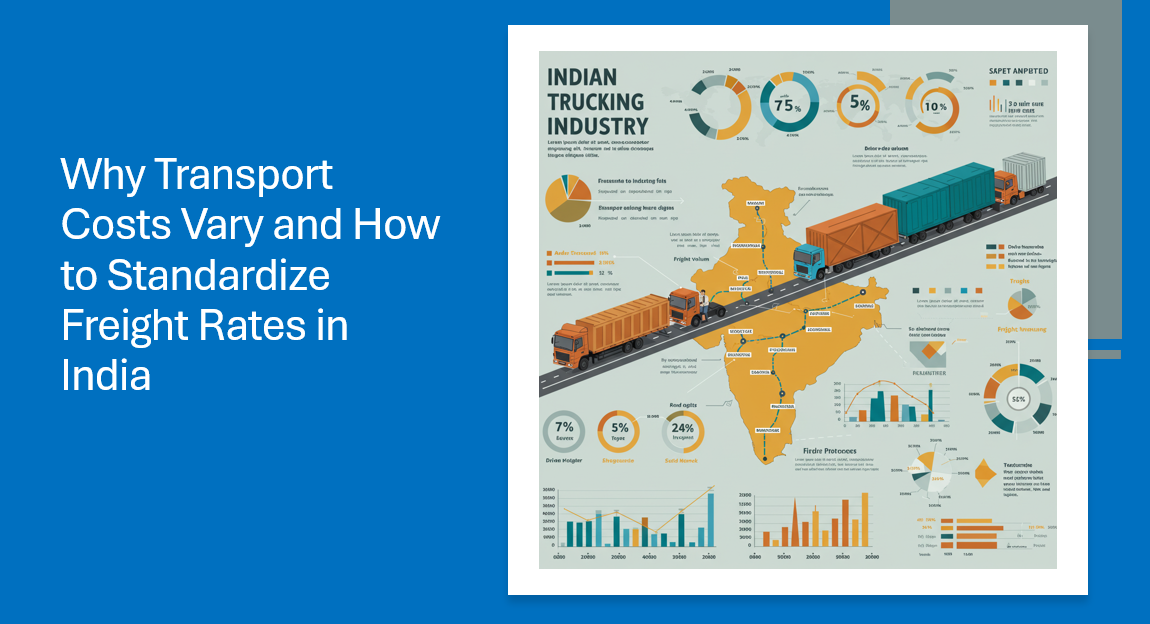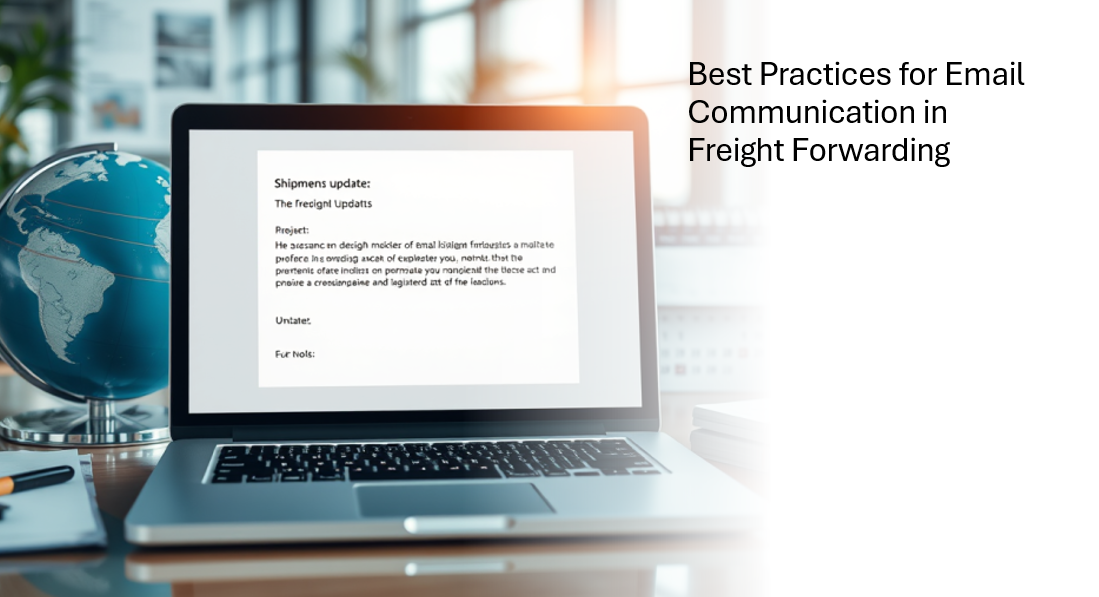The Introduction:
In the ever-evolving landscape of the trucking and logistics sectors, one of the most pressing challenges that carriers and shippers alike tackle is the issue of empty backhauls and inefficient load utilization. This age-old problem not only represents a significant drain on profitability but also contributes to increased fuel consumption, heightened carbon emissions, and a larger ecological footprint.
Problem Statement:
The root of the problem lies in the integral nature of the industry itself. After delivering their cargo to the designated destination, trucks often return empty, resulting in wasted fuel, idle resources, and lost revenue opportunities. This phenomenon, commonly referred to as “empty backhauls,” is a pervasive issue that plagues the trucking sector, impacting both small and large operators.

Analysis of Pain Points:
Financial Burden: Empty backhauls translate into direct financial losses for carriers. The cost of fuel, driver wages, and maintenance expenses remain constant, regardless of whether the truck is carrying a load or not. This financial burden erodes profit margins and hinders the overall profitability of trucking operations.
Environmental Impact: The transportation sector is a significant contributor to greenhouse gas emissions, and empty backhauls only exacerbate this problem. Trucks burning fuel unnecessarily during their return trips release harmful emissions into the atmosphere, further contributing to air pollution and climate change.

Inefficient Resource Utilization: Empty backhauls represent a gross underutilization of available resources. Trucks, trailers, and drivers remain idle or underutilized, leading to reduced productivity and operational inefficiencies.
Customer Dissatisfaction: Inefficient load utilization can result in delayed deliveries, missed deadlines, and compromised customer service. This, in turn, can erode customer trust and loyalty, ultimately impacting the company’s reputation and bottom line.
The solution to Pain Points:
The solution to addressing empty backhauls and inefficient load utilization lies in optimizing the entire logistics and transportation network. By leveraging advanced technologies, data analytics, and collaborative platforms, carriers and shippers can unlock new levels of efficiency and resource utilization.

Possible Solutions without AI:
Load Consolidation and Pooling: Carriers can collaborate with other transportation companies or freight forwarders to consolidate shipments and maximize the utilization of available truck space. By combining multiple smaller loads into a single truckload, companies can reduce the number of empty backhauls and improve overall efficiency.
Backhaul Matching: Traditional freight exchanges and load boards can be utilized to match outbound loads with available backhaul capacity. This approach allows carriers to find return loads, reducing the likelihood of empty backhauls and increasing revenue opportunities.

Route Optimization: Careful planning and optimization of delivery routes can help minimize empty miles and maximize payload efficiency. By carefully sequencing deliveries and pickups, carriers can ensure that trucks are fully loaded for as much of the journey as possible.
Incentives and Pricing Strategies: Carriers can implement pricing strategies and incentives to encourage shippers to consolidate shipments or schedule pickups and deliveries in a more efficient manner. These strategies can include volume discounts, backhaul rates, or other incentives that promote better load utilization.
Possible Better Solutions With AI:
While traditional methods can partially address the issue of empty backhauls and inefficient load utilization, the integration of artificial intelligence (AI) and advanced technologies can provide more comprehensive and transformative solutions.

Predictive Analytics and Demand Forecasting: AI-powered predictive analytics can analyze historical data, market trends, and real-time information to forecast demand patterns accurately. This enables carriers to proactively plan and optimize their routes, load assignments, and resource allocation, minimizing the likelihood of empty backhauls and maximizing load utilization.
Dynamic Load Matching and Real-Time Optimization: AI-driven load matching platforms can dynamically match available trucks with compatible loads in real-time, considering factors such as location, capacity, delivery windows, and backhaul opportunities. This dynamic approach ensures that trucks are always carrying optimal loads, reducing empty miles and increasing efficiency.

Intelligent Route Planning and Optimization: AI algorithms can analyze vast amounts of data, including traffic patterns, weather conditions, construction zones, and delivery constraints, to create optimized routes that minimize empty miles and maximize payload efficiency. These algorithms can also dynamically adjust routes in response to real-time conditions, further enhancing operational efficiency.
Collaborative Logistics Platforms: AI-enabled collaborative logistics platforms can facilitate seamless communication and coordination among carriers, shippers, and other stakeholders. These platforms can leverage machine learning algorithms to identify potential load consolidation opportunities, match backhaul capacity, and enable real-time adjustments to optimize the entire supply chain network.

Implementation of AI Solutions:
Implementing AI solutions in the trucking and logistics industry requires a strategic approach and careful planning. Here are some key considerations:

Data Integration and Management: AI systems rely on accurate and comprehensive data to function effectively. Carriers and shippers must invest in robust data collection and management systems to capture relevant information from various sources, including telematics, GPS, and transportation management systems.
Infrastructure and Technology Adoption: Deploying AI solutions often requires upgrading existing infrastructure and adopting new technologies. This may involve investing in cloud computing, edge computing devices, and advanced analytics platforms, as well as training personnel to operate and maintain these systems.

Collaboration and Data Sharing: The successful implementation of AI solutions hinges on collaboration and data sharing among industry stakeholders. Carriers, shippers, and logistics providers must develop secure and interoperable data-sharing frameworks to enable seamless information exchange and optimize decision-making processes.
Change Management and Workforce Upskilling: Introducing AI solutions can disrupt existing workflows and processes. Effective change management strategies and workforce upskilling programs are essential to ensure a smooth transition and maximize the benefits of AI adoption.
Implementation Challenges:
While AI solutions offer significant potential for addressing empty backhauls and inefficient load utilization, there are several challenges that must be addressed:

Data Quality and Availability: The accuracy and completeness of data are crucial for AI systems to function effectively. Ensuring high-quality data from various sources can be a challenge, especially in a fragmented industry with diverse stakeholders.
Integration and Interoperability: Integrating AI solutions with existing systems and ensuring interoperability across different platforms and stakeholders can be complex and time-consuming.

Trust and Adoption: Some industry stakeholders may be hesitant to adopt AI solutions due to concerns about job displacement, data privacy, or a lack of understanding of the technology’s capabilities.
Regulatory and Legal Considerations: The implementation of AI solutions in the transportation sector may require navigating various regulations and legal frameworks related to data privacy, cybersecurity, and liability.

The Conclusion:
Addressing the pain points of empty backhauls and inefficient load utilization is critical for the trucking and logistics industry to achieve sustainable growth, profitability, and environmental stewardship. While traditional methods offer partial solutions, the integration of AI and advanced technologies presents a transformative opportunity to optimize operations, maximize resource utilization, and minimize empty miles.
By leveraging predictive analytics, dynamic load matching, intelligent route planning, and collaborative logistics platforms, carriers and shippers can unlock new levels of efficiency and cost savings. However, the successful implementation of AI solutions requires a strategic approach, robust data management, infrastructure upgrades, stakeholder collaboration, and effective change management strategies.
Despite the challenges involved, embracing AI is a necessary step for the trucking and logistics industry to remain competitive in an ever-evolving market. By proactively addressing empty backhauls and inefficient load utilization, companies can not only improve their bottom line but also contribute to reducing their environmental footprint and promoting sustainability.

Call-to-Action:
Trucking and logistics companies must take immediate action to explore and implement AI-driven solutions to tackle the persistent issue of empty backhauls and inefficient load utilization. By embracing innovation and leveraging the power of AI, the industry can pave the way for a more efficient, sustainable, and profitable future.
Stay tuned for more insights on how AI is reshaping the future of Trucking, logistics, and supply chain management. Together, let’s embark on a journey towards smarter, more connected, and more efficient Follow My LinkedIn
Kalaiselvan Vasudevan| Professional Logistics Solutioneer | LinkedIn
Big thanks to all the LLMs Models and their Founders! You’ve created some amazing AI tools that have inspired me to become a Blog Writer, Digital Artist, and Prompt Engineer! 🚀 #OpenAI #CopilotAI #DesignerAI #Claude2 #GoogleGemini #llama2 #AllOpenSourceAIModels #Grammarly #LinkedIn 🎨📝
#TruckingRevolution #AILogisticsWizards #MaximizedEfficiency #GreenHauling #FutureOfFreight”







Leave a Reply